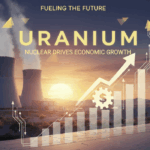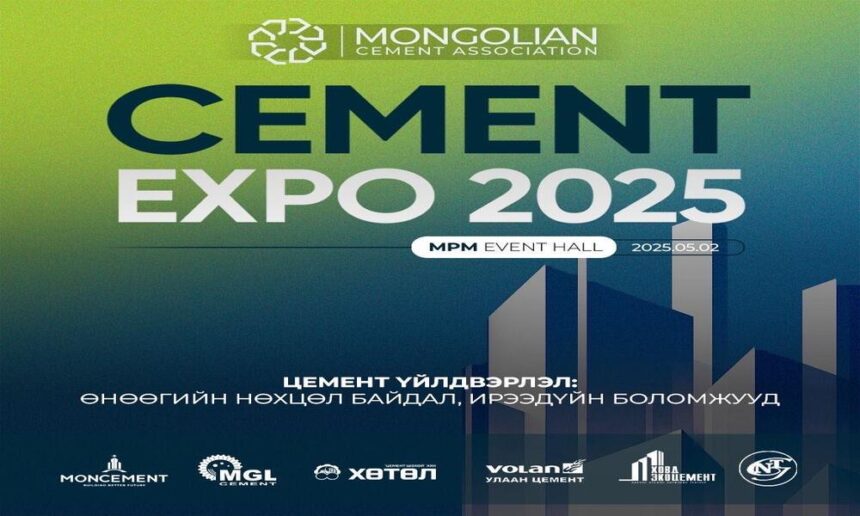An incredible economic paradox has emerged in Mongolia’s cement production sector. This became clear during the “Cement Expo-2025” event, held for the first time by the Mongolian Cement Manufacturers Association on May 2, 2025, in Ulaanbaatar. The issue is that, despite Mongolia being home to seven cement factories with a combined annual production capacity of 4.5 million tons, the total consumption in 2024 was only 2.3 million tons — and 250,000 tons of that was imported, often of questionable quality.
Even with a capacity that far exceeds consumption, there are still efforts underway to obtain permits for building new cement factories as stated by the authorities. Is this due to a lack of understanding of the market, or an attempt to synchronize with the government on large-scale projects? Numerous events that defy basic logic continue to unfold in this sector.
Fragmentation in the Industry
In 2024, Mongolia’s seven cement factories collectively supplied only 2.2 million tons of cement, a 12 percent increase compared to the year before. Had they utilized their full capacity and produced an additional 2.3 million tons, thousands of housing units and kilometers of roads could have been constructed. Despite this, 12 percent of total demand was still met through imports.
The first reason for this paradox lies in cost — Chinese cement is twice as cheap as Mongolian cement. China produces 2 billion tons annually, accounting for 50 percent of the global market, benefiting from economies of scale. After paying in foreign currency, transporting it by rail, and avoiding customs duties, Chinese cement remains cheaper than local alternatives. In some regions, due to transportation distances and the lack of adequate storage facilities in cities, imported cement is simply more economical.
The second reason is Mongolia’s unreliable, import-dependent energy supply. For instance, in 2024, the Khovd cement factory, dependent on Russia’s power grid, experienced 160 hours of unplanned power outages, causing equipment damage and drastically increasing production costs, according to N. Khayankhyarvaa, head of finance at Western Hold Company. Unpredictable energy prices and supply have significantly raised the cost of domestic cement production.
The third issue is quality. While Chinese cement is cheap, it contains higher levels of ash than international standards allow, and the date of manufacture is unclear. Cement deteriorates over time — if stored improperly for over six months, its strength can decline by up to 40%. Moreover, Mongolia currently does not have a laboratory at the border to test cement quality. Domestic producers who comply with international standards are being undercut by imported cement sold at dumping prices, creating an uneven playing field.
The fourth problem is weight restrictions on roads. New standards for transporting heavy loads have tripled transportation costs for supplying raw materials from remote areas. Because roads were originally not designed for heavy transport — and even light roads were poorly built and are not regularly maintained — these new restrictions are placing a heavy burden on building materials manufacturers, increasing production costs and thus prices.
Finally, according to S.Tumurkhuu, State Secretary of the Ministry of Construction and Urban Development, no more permits for building material production will be issued starting in 2026. This suggests that anyone can build a factory now, but only those close to the government and able to secure major projects will survive — the rest will face bankruptcy. Ideally, new factories should only be built after at least 70% of existing capacity is utilized.
Solutions
Mongolia must acknowledge that it cannot economically compete with China on scale and should instead implement strategic protections for its cement industry, the “bread” of the construction sector.
Instead of building new factories, it would be more effective to focus all available resources on maximizing the capacity of existing factories. This includes modernizing equipment, improving energy efficiency, introducing modern quality control systems, developing transportation and logistics infrastructure, and conducting research and development on cement compositions suited to Mongolia’s climate.
If cement is being sold below sustainable production costs, the issue must be addressed under anti-dumping laws and regulations. The government should prioritize domestic cement in its infrastructure projects, set specific quality standards, and grant preferential treatment to local producers.
Resolving the energy crisis is crucial to boosting the industry’s competitiveness. Necessary measures include establishing guaranteed power supply agreements with energy providers, investing in backup power generators, energy storage and recycling technologies for factories, and developing a special industrial electricity network that grants priority access for essential production. For example, Moncement has implemented waste heat recovery (WHR) technology, which supplies up to 40% of its electricity needs by reusing emitted heat, cutting costs.
In Mongolia, competition should be based not just on price but also on quality. It is time to establish a system that enforces quality standards for cement at border checkpoints, requires certificates verifying date of production and ash content, and enables the creation of an independent agency to inspect both imported and domestic cement. Suppliers that fail to meet these standards should face substantial penalties. Ensuring that all cement meets international standards will allow local producers to compete not only on price, but also on quality and reliability.
Instead of further fragmenting the cement industry by allowing more new factories, a unified strategy should be adopted to fully utilize the capacity of existing ones. Small manufacturers should be encouraged to merge and collaborate. Shared investment models should be identified, and factories should specialize in particular product types. Joint logistics and distribution networks can also be implemented to reduce costs.
An optimal geographic distribution of production facilities should be pursued, with strategic reserves of cement established in high-demand regions and modern storage facilities built near major cities. Preferential transportation rates for domestic cement and optimized supply chains require the creation of regional and seasonal demand maps. This regional approach would help recapture parts of the market currently lost to imports due to border proximity.
A centralized information system for the industry should be established. This would include publishing regular reports on capacity utilization, forecasting regional demand trends, coordinating factory production schedules, and providing transparent market data to potential investors.
Infrastructure development is Mongolia’s most critical economic objective and cement is the primary material for infrastructure. I hope that policymakers and industry leaders will implement the above proposals before the paradox in the sector turns into a crisis.







